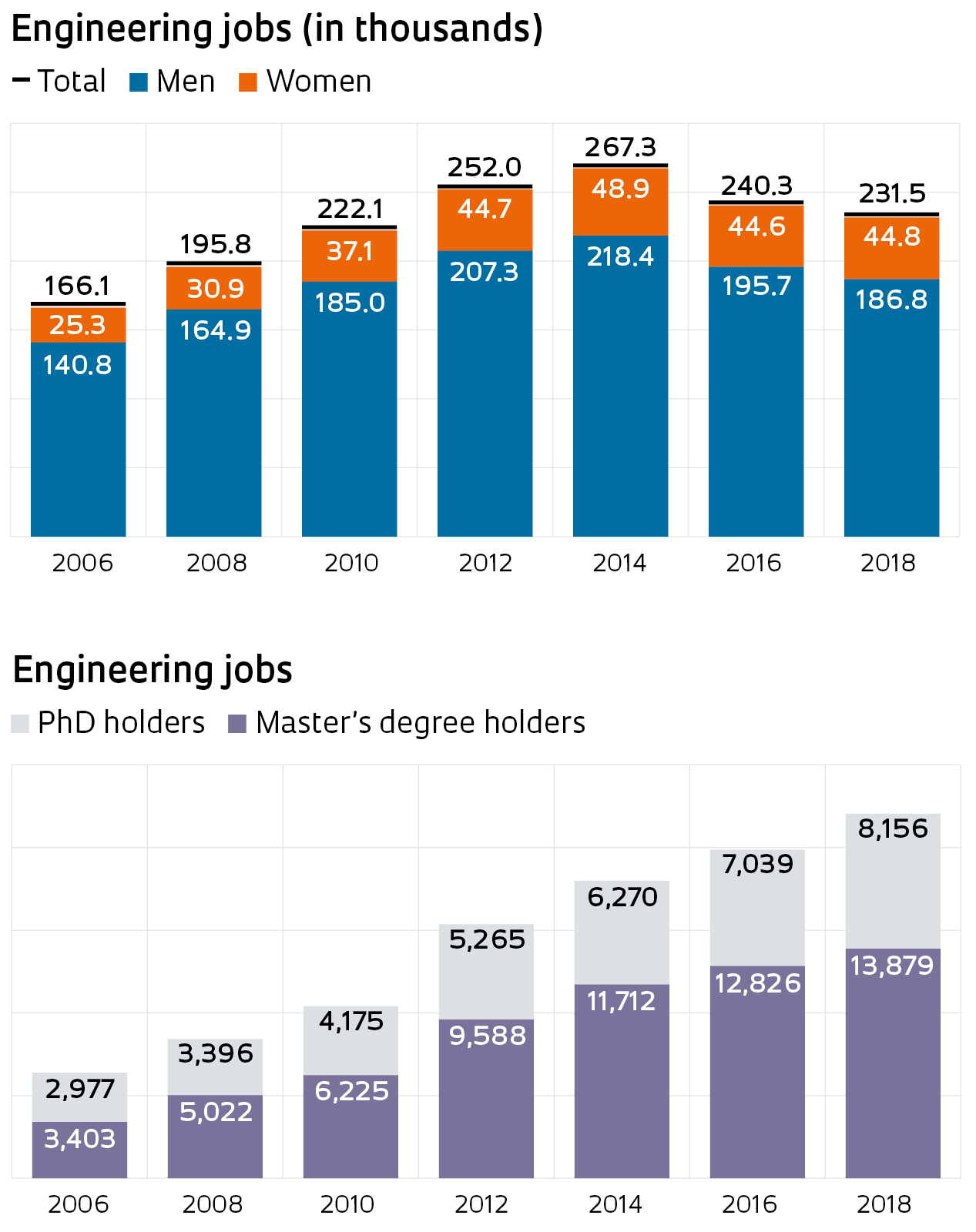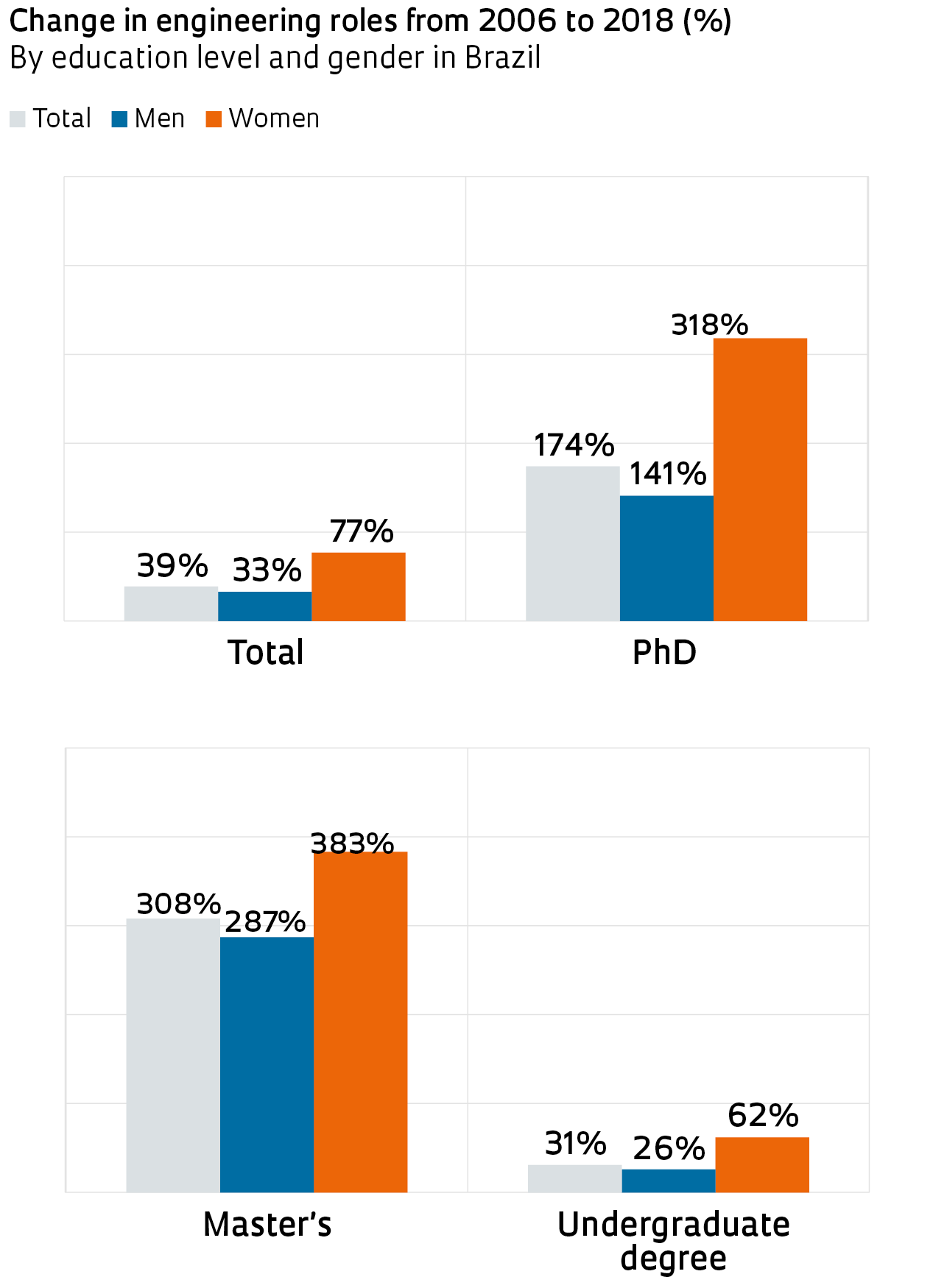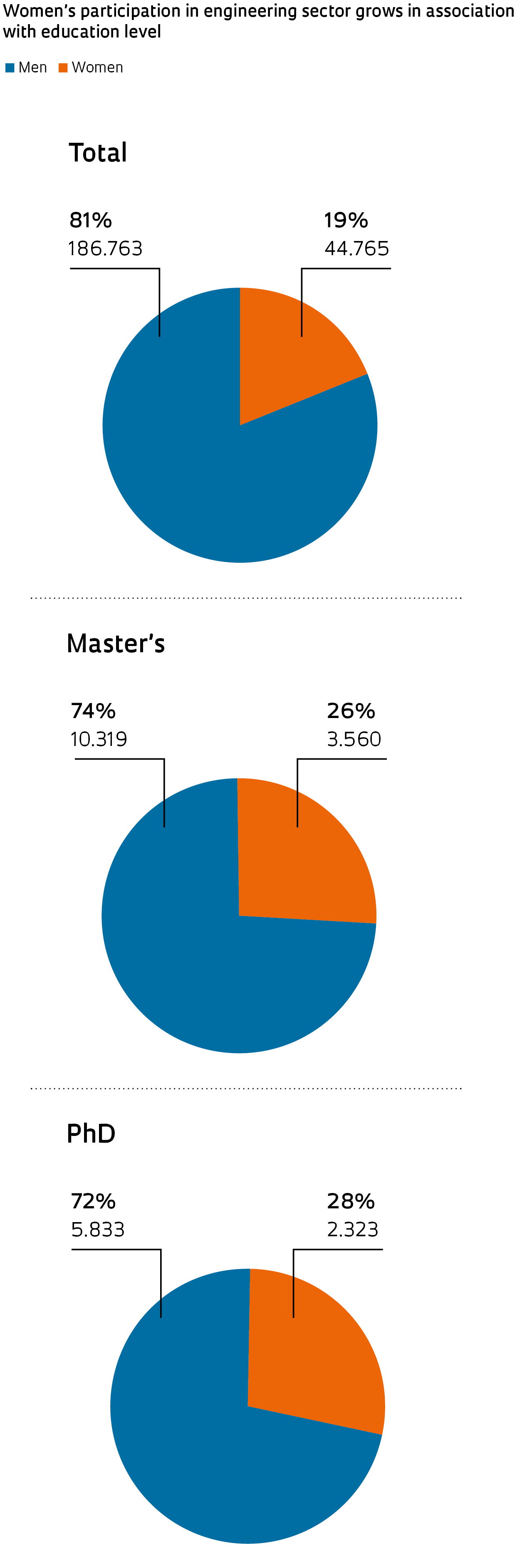Crisis leads to drop in formal employment in engineering; percentage of women rises; for those with a master’s or PhD, growth continued until 2018

- Formal employment in engineering roles1 grew by 61% in Brazil between 20062 and 2014, from 166,000 to 267,000, then fell by 13% to 232,000 between 2014 and 2018. Between 2006 and 2018, there was a net increase of 39%
- The percentage of women working in the sector grew from 15.3% in 2006 to 19.3% in 2018, with a 77% increase in the number of jobs in the period, compared to 33% among men.
- For those with a master’s degree or PhD, growth continued until 2018, totaling 308% and 174% respectively.
Women make more progress in engineering education and employment

- When including education, the increase for women was 383% (from 737 to 3,560 roles) for those with a master’s degree, and 318% (from 556 to 2,323 roles) for those with a PhD.
- Among men, there was also an increase for both groups, although to a lesser extent: 287% (2,666 to 10,319 roles) for those with a master’s degree and 141% (from 2,421 to 5,833 roles) for those with a PhD.

- Due to their faster growth in education, women accounted for 26% of master’s roles in 2018 (22% in 2006) and 28% of PhD roles (19% in 2006).
Notes (1) The following areas of the Brazilian Code of Occupations were considered: engineering roles, engineering researchers, and engineering professors.(2) There is no information on postgraduate education on the RAIS report prior to 2006. NOTE: Totals may not equal sum of breakdown due to rounding
Sources RAIS Microdata/STE/Brazilian Ministry of Economy. Prepared by: ST&I Indicators team/Studies and Indicators Department, FAPESP.
Republish
